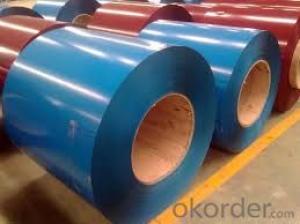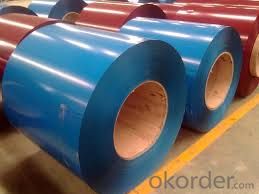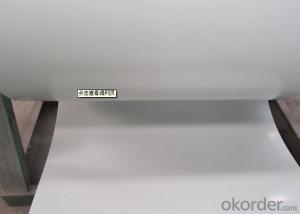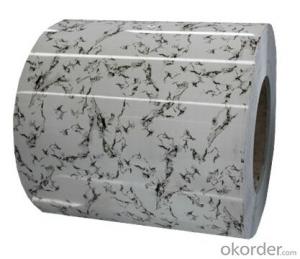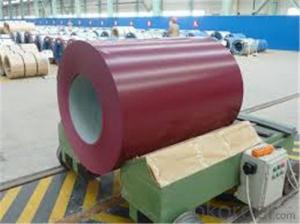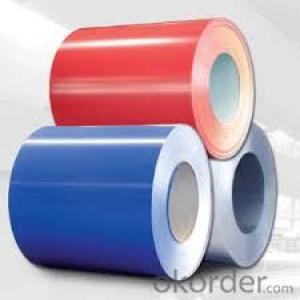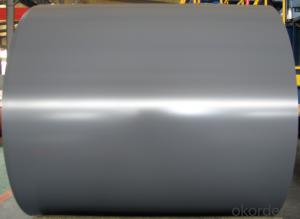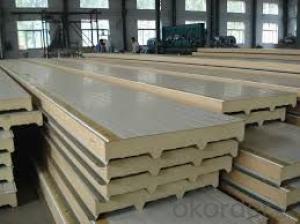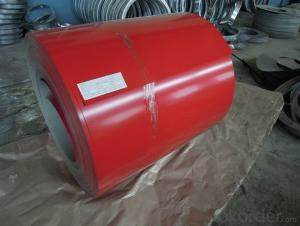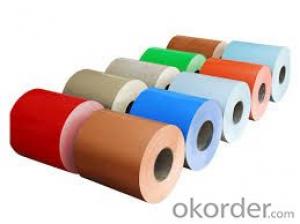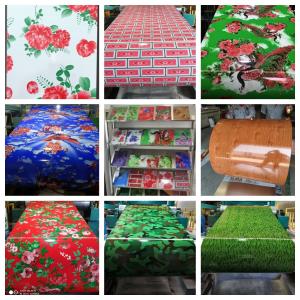Print Rolled Steel Color Ppgi Coil/Pinting Steel Rolled
- Loading Port:
- Shanghai
- Payment Terms:
- TT OR LC
- Min Order Qty:
- 20 m.t.
- Supply Capability:
- 9000 m.t./month
OKorder Service Pledge
OKorder Financial Service
You Might Also Like
Cold Rolled Steel Coil
Advantages of our Cold Rolled Steel coils
1.Excellent corrosion resistance.: The zinc layer provides a good protection of Pre-painted Galvanizeed Steel Sheet.
2.High heat resistance: The reflective surface of the material aids in efficiently reflecting the sunlight away and in turnreducing the amount of heat transmitted.The thermal reflectivity converts into energy savings.
3.Aesthetics: Pre-Painted Galvanized steel sheet is available in plethora of patterns and multiple sizes as per the requirements that given by our customers.
4.Versatility: can be used in the various areas.
Specifications
COLD ROLLED STEEL COILS
Thickness: 0.12-2.5mm
Coil width:600-1250mm
Coil weight: 2.0-8.0MT
Steel grades:Q195-Q345,GR.A,SGCC, SPCC,SPHC,DX51D, ETC.
Standard: JIS G3302, JIS G3313, ASTM A653, GB/T2518-88, GB11253-89,ASTM A1008-2000,BS,ETC.
Place of Origin: Shandong, China (Mainland)
Standard: AISI, ASTM, BS, DIN, GB, JIS
Type: Steel Coil
Technique: Cold Rolled
Packing
Standard seaworthy export packing:
3 layers of packing, inside is kraft paper, water plastic film is in the middle and outside GI steel sheet to be covered by steel strips with lock,with inner coil sleeve.
Standard
JIS G 3312, ASTM A755, EN10169,GB/T2518
Base sheet: Galvanized steel coils\ Galvalume steel, such as SGCC, CGCC, DX51D+Z, Q195,etc
Base metal: Hot galvanized steel or PrePainted Galvanized aLuminium steel or HBR>85
Techinque: Cold rolled, hot-dipped galvanizing, color coated
Quality: CQ DQ prime
Lifespan: 10-15 years
Payment and Delivery Time
1. Payment: 30% T/T as deposit and 70% balance irrevocable L/C at sight or nogotiate
2. Delivery Time: 10-20 days after recepit of 30% T/T.
Applications of Cold Rolled steel coil
The great cold plate can be used for chemical industry,dye,oil and other packaging materials,with a barrel for house-hold appliances of various parts of the processing and production,for motorcycle cylinder, cylinder,car door,chassis and other parts of the production.Agricultural vehicle body,ventilation pipe light construction,anti-static floor panels,door panels,large dust collector inside the grid plate,a bicycle handle,metal materials,machinery processing and other industries.
Our Strength
--ISO,SGS,BV,CE approved
--Competitive price with best quality and service
--Nearest sea port, Convenient transportation
--More than 20 years Export Experiences
| Raw material | SGCC, SPCC, DC51D, SGHC,A653 |
| Steel gardes | Q195-Q345, GR.A, SGCC, SPCC,CGCC,SPHC, DX51D, etc. |
| Standard | JIS G3302, JIS G3313, ASTM A653, GB/T2518-88, GB11253-89, ASTM A1008-2000, BS, etc. |
| Thickness | 0.12mm-2.5mm |
| Width | 600mm-1250mm |
| Tolerance | thickness+/-0.01mm |
| Single weight | 2.0-8.0MT |
| Packing | Wrapped by plastic film and waterproof paper, and then fastened on wooden pallet. Or as you request. |
| Minimum quantity | Can be 25MT |
| Price | |
| Delivery time | 15-20 days after we sign the contract. |
| Payment terms | T/T or L/C |
| Supply ability | 15000 MT per month |
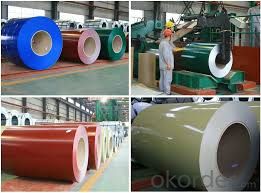
FAQ
1. Is the sample available?
Yes, samples can be sent for test if you need.
- Q: Can steel coils be coated with luminescent materials?
- Yes, steel coils can be coated with luminescent materials. This process involves applying a layer of luminescent material onto the surface of the steel coils, allowing them to emit light in the dark or under specific lighting conditions.
- Q: How are steel coils used in the production of building systems?
- Steel coils are used in the production of building systems as they provide a cost-effective and versatile material for various construction applications. These coils are often processed and shaped into different components, such as beams, columns, and roofing materials, to meet the structural requirements of buildings. The strength and durability of steel make it an ideal choice for constructing high-rise buildings, industrial facilities, and other structures that require stability and longevity.
- Q: How are steel coils tested for quality?
- Steel coils are tested for quality through a variety of methods, including visual inspections, measurements of dimension and weight, and mechanical tests such as tensile strength and hardness. Additionally, non-destructive testing techniques like ultrasonic or magnetic particle testing may be used to detect any potential defects or flaws within the coils. These comprehensive testing procedures ensure that the steel coils meet the required quality standards before they are used in various industries.
- Q: How can the quality of steel coils be ensured?
- The quality of steel coils can be ensured through a combination of rigorous testing, adherence to industry standards, and effective quality control measures throughout the manufacturing process. This includes conducting various tests such as chemical composition analysis, mechanical property testing, and surface inspection to verify the integrity and durability of the steel coils. Additionally, implementing strict quality control protocols, regular inspections, and continuous improvement initiatives are essential to ensure consistent and high-quality production of steel coils.
- Q: How are steel coils used in the production of heating systems?
- Steel coils are typically used in the production of heating systems as a key component in heat exchangers. The coils provide a large surface area for heat transfer, allowing for efficient heating of air or water. They are often used in furnaces, boilers, and air conditioning units, where they help to transfer heat from a heat source to the surrounding environment or distribute it throughout a building.
- Q: how much pressure can steel withstand? and how much pressure can concrete withstand? per m3 or cm3? thanks
- Your question is not specific,there are many types of Concrete according to ratio and many types of steel but if want general answer,Concrete is good for compression and for 1:2:4 Cement-Sand-Gravel Ratio up to 4000 psi but very weak in tension where as tor steel is good for tension and is about 70000-80000 psi .
- Q: So...that means Wolverine can stab him, right? Because Adamantite is stronger than steel. Correct?
- I don't think Wolverine could stab Superman. The name Man of Steel is just a nickname that was acquired through the years. Just like Superman is able to fly, but when the initial comic came out, he could only, leap tall buildings with a single bound, and is stronger than a locomotive. Of course, now he can fly and is MUCH more stronger than a train! hahahahah. So even though Wolverine is cool, I hardly doubt he could stab Superman...not that he would of course. =)
- Q: Which of the two are better for exhaust manifolds, im guessing the stainless steel right?
- For strength, cast iron (that's why OEM exhaust manifolds are made out of it). For performance, stainless steel. For one, stainless steel headers are lighter than cast iron ones. Then they come in multiple arrangements, (4-2-1 or 4-1 for 4 cylinder motors). The down fall is strength. Hit a pot hole with the collector of a stainless steel header. It's going to have a nice dent in it.
- Q: What are the different surface finishes available for steel coils?
- Some of the different surface finishes available for steel coils include hot-dip galvanized, galvannealed, electro-galvanized, and plain.
- Q: How are steel coils cleaned before use?
- Steel coils are cleaned before use through a process known as pickling. Pickling is a chemical treatment that helps remove any impurities, scale, rust, and other contaminants from the surface of the steel coils. The initial step involves the steel coils being immersed in an acid bath, typically a mixture of hydrochloric acid and sulfuric acid. This acid solution helps dissolve any rust, scale, and other surface impurities. The duration of the immersion depends on the extent of contamination and the desired cleanliness level. After the pickling process, the coils are thoroughly rinsed with water to remove the acid solution and any remaining residue. This step is crucial to prevent further corrosion or chemical reactions. Once the rinsing is complete, the coils are often subjected to a drying process to remove any remaining moisture. This can be done through air drying, using high-pressure air blowers, or by passing the coils through heated chambers. After the cleaning process, the steel coils are now ready for use in various applications such as manufacturing, construction, or any other industry that requires high-quality steel products. The pickling process ensures that the coils have a clean, smooth, and corrosion-resistant surface, allowing them to perform effectively and meet the desired specifications.
Send your message to us
Print Rolled Steel Color Ppgi Coil/Pinting Steel Rolled
- Loading Port:
- Shanghai
- Payment Terms:
- TT OR LC
- Min Order Qty:
- 20 m.t.
- Supply Capability:
- 9000 m.t./month
OKorder Service Pledge
OKorder Financial Service
Similar products
Hot products
Hot Searches
Related keywords
